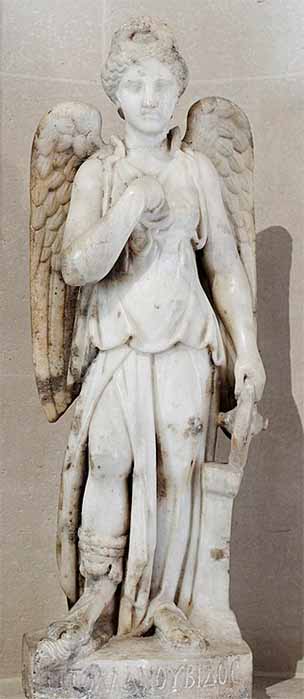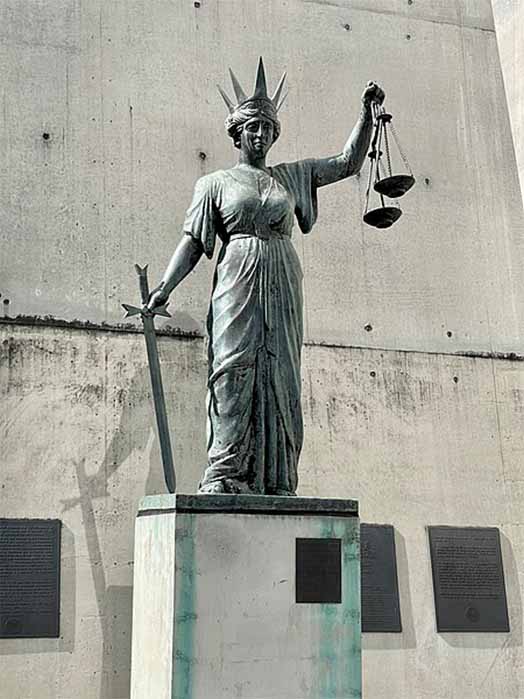
Greece’s Rhamnous Coastal Port: Supreme Court Of Nemesis And Themis
Rhamnous on the east coast of Attica, overlooking the island of Euboea, was a deme of strategic importance to Athens during the sixth and fifth centuries BC, because it guarded the Euripus Strait, providing safe passage for mercantile and war vessels intending to round the coast of Sounion en route to Piraeus port. Built on a promontory, surrounded three-quarters by sea, from inland the polis was only accessible via a narrow ridge from the mountain behind it. At its two small harbors, flanking the fortified city, ships could find shelter and replenish their water and food supplies under the watchful eye of the garrison that was placed there. The Euripus Strait was an important sea route that Athens depended upon to bring its grain. Within this sheltered and scenic setting, Rhamnous was also the home of mythological deities Nemesis and Themis. A lane from the port city winding through the necropolis, led to the sea-facing sanctuaries - a mythological Supreme Court- where these two austere goddesses dispensed justice and divine retribution in tandem.

View of the ruins of Rhamnous, overlooking the Epirus Strait (CCO)
The Goddesses Nemesis and Themis
Most people are familiar with the proverb “to meet one’s nemesis”, which according to the Longman Dictionary means: “an opponent or enemy that is likely to be impossible to defeat, or a situation that is likely to be impossible to deal with”, which evolved from the mythology of Nemesis, an ancient goddess, older than Zeus, and ancient Greeks certainly feared meeting her.
Nemesis is said to be the daughter of Erebus, the primordial deity of darkness and his sister Nyx, the Night. Nemesis was sister to Aether (Brightness),Hemera (Day), Moros (Doom, Destiny), the Keres (Destruction, Death), Thanatos (Death), Hypnos (Sleep), the Oneiroi (Dreams), Momus (Blame), Oizys (Pain, Distress), the Hesperides, the Moirai (Fates), Apate (Deceit), Philotes (Friendship), Geras (Old Age), and Eris (Strife); clearly not such a happy family of siblings. Originally Nemesis dispersed fortune, neither good nor bad, but according to what each deserved. Later this evolved and to Nemesis was attributed the task of divine retribution. However, in typical godly spite this sometimes turned into revenge. Nemesis was not averse to doing favors for other deities who implored her to punish humans who had offended them. In the Greek tragedies Nemesis appears chiefly as the avenger of crime and the punisher of hubris, (self-aggrandizement) when humans grew “too big for their boots” and antagonized the gods by thinking they could outsmart them, or that they were in control of their own destinies. In the saying “pride comes before the fall”, Nemesis would personify the fall.
- Greece’s East Attica In Antiquity: Playground Of Gods, Heroes And Heroines
- The Greek And Roman Agoras In Athens
- Ancient Olympia: Site Of The Sacred Hieros Gamos
In one of the traditions, Nemesis was the mother of Helen of Sparta, not Leda, Queen of Sparta. It relates that Nemesis, in the form of a goose, was raped by Zeus in the form of a swan at Rhamnous, and she produced the egg, bearing Helen, which was presented to Leda, who raised the beautiful Helen.

Statue of winged Nemesis (second century AD) Louvre Museum (Public Domain)
Nemesis is portrayed as a winged goddess with a whip or rod in her hand and she travels in her chariot drawn by griffins. She is not to be confused with the goddess Themis, who is identified by her sword and scales, as she is the Lady of Justice. As the daughter of Uranus and Gaia, Themis was also one of the Titan deities before the Olympians came to rule, yet she became Zeus’ second wife, and the mother of the Horae, the original three seasons and the Morae: Clotho who spun the thread of a human’s life, Lachesis who dispensed life and, and Atropos who cut the thread. Themis was responsible for justice in a broader sense than just “law” – she had to keep law and order, both in the human sphere and on Olympus, the dwelling of the gods. This pertained to the keeping of customs, keeping traditions, decorum, maintaining social order, generally keeping things neat and tidy, so everyone knew their place – and when they overstepped, Themis called upon Nemesis to step in with punishment.





